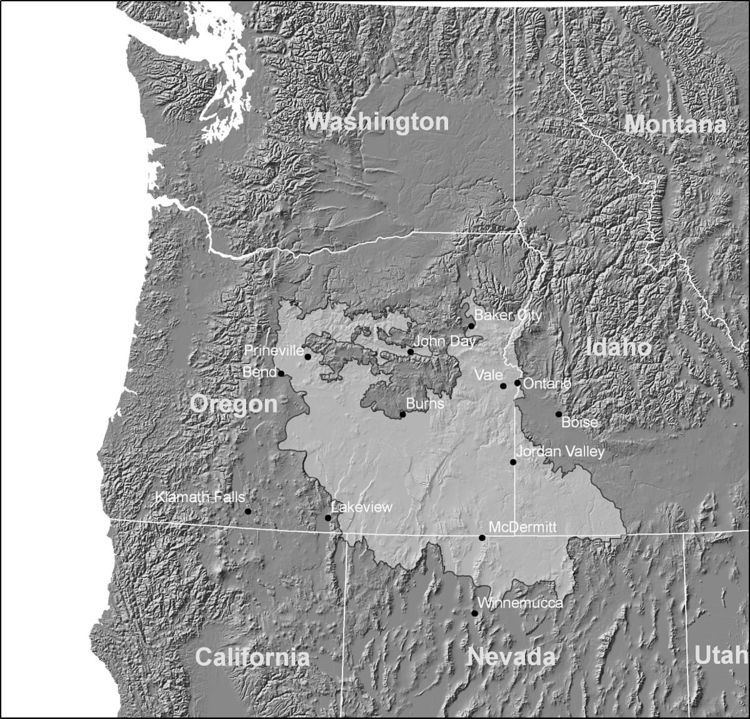 | ||
The Sagebrush Cooperative is collaborative group based in southeastern Oregon and adjacent portions of Idaho and Nevada involving land managers, owners, and interest groups with the goal of improved management and conservation of shrub steppe systems.
Contents
Why protect sagebrush?
The sagebrush steppe ecosystem, an icon of the western United States, is being recognized by many to be threatened or degraded across much of its range. Habitat for sagebrush steppe dependent species is being eliminated by energy development, altered fire regimes and rapid conversion to exotic annual grasslands and juniper woodlands. In recent years, the sagebrush steppe has received increasing attention and there is a need for regional coordination and assessment of the opportunities for partnerships and projects to better manage, conserve and restore key habitats. One of the largest remaining blocks of high quality sagebrush steppe is in the High Desert, a portion of several ecoregions spanning southeastern Oregon, northern Nevada and southwestern Idaho (Figure 1). This area includes the higher elevation portions of the Columbia Plateau and northern Great Basin from just south of the Blue Mountains to the Sheldon National Wildlife Refuge and the Owyhee Uplands.
Despite the fact that the sagebrush steppe ecosystem is being increasingly recognized as important and threatened, there is remarkably little published data or references documenting current condition, trends, threats, or the effectiveness of recent management activities in sagebrush steppe for the region. Recent range-wide analyses spurred by the petitions to list the greater sage-grouse as an endangered species have documented broad trends across the west but do not include data or information at a scale useful for local prioritization and project planning.
Sagebrush steppe habitats emerged as priority habitats in the Oregon, Idaho, and Nevada state wildlife agency strategies (State Wildlife Plans) The Oregon Conservation Strategy identifies sagebrush steppe and shrublands as a Strategy Habitat and multiple sagebrush steppe dependent species as Strategy Species. The Idaho Comprehensive Wildlife Conservation Strategy identifies southern xeric shrubland and steppe, which includes multiple sagebrush steppe ecological systems, as a statewide Priority Habitat. The Idaho Strategy also identifies many associated Species of Greatest Conservation Need. The Nevada Wildlife Action Plan identifies sagebrush as a Key Habitat and eight sagebrush dependent species as Species of Conservation Priority. Each of the State Wildlife Plans identifies specific priority geographic areas for conservation of sagebrush steppe within the High Desert region (Appendix A).
